
Experts reveal secrets about flying
Flying 101: experts reveal all
No matter how often we fly, the wonder of air travel never ceases to astound us. Planes are becoming ever more sophisticated and intelligent, and the in-flight experience has come on leaps and bounds since the early days of airliners. We've done all the research and asked the experts – cabin crew, pilots, airline execs – to explain everything we’ve always wanted to know about flying.
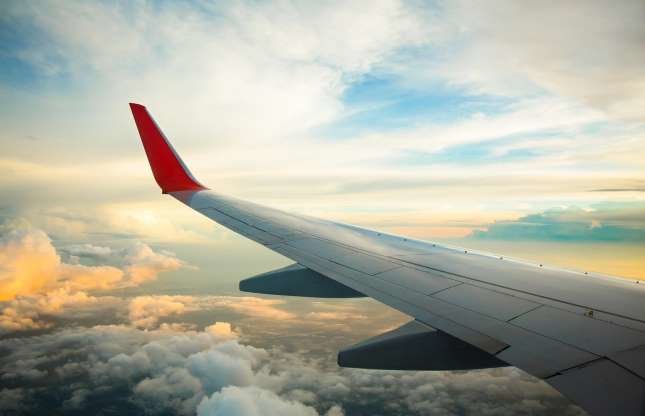
Planes fly high for speed
Commercial planes generally travel at a lofty 35,000 feet (10.6km). That’s because, the more a plane ascends, the thinner the air becomes, so an aircraft can travel faster and more cost efficiently at a greater altitude. But it isn’t a case of the higher, the better. If an aircraft travels too high (above about 42,000 feet/12.8km), there is insufficient oxygen and this can cause problems with the engine.
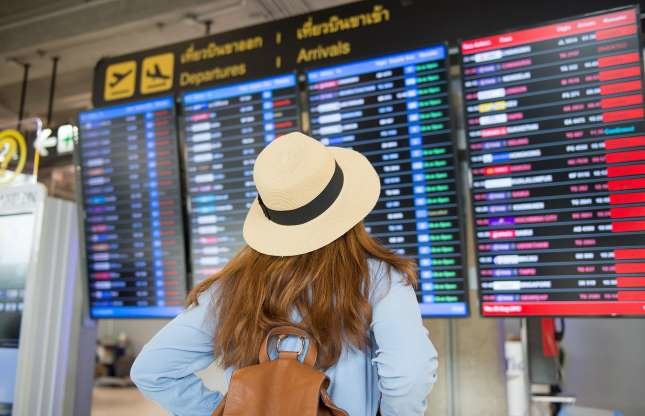
Calculating flight time is complicated
Working out flight time (which is measured from gate to gate) requires complex software to calculate all the variables including distance, altitude, weather forecast (to work out head or tail winds) and air traffic congestion along the way. Despite increasingly sophisticated planes, flight times have increased in recent decades. This so-called schedule padding gives airlines a little extra time in case of delays (perhaps a valid excuse considering ever-increasingly busy airports).
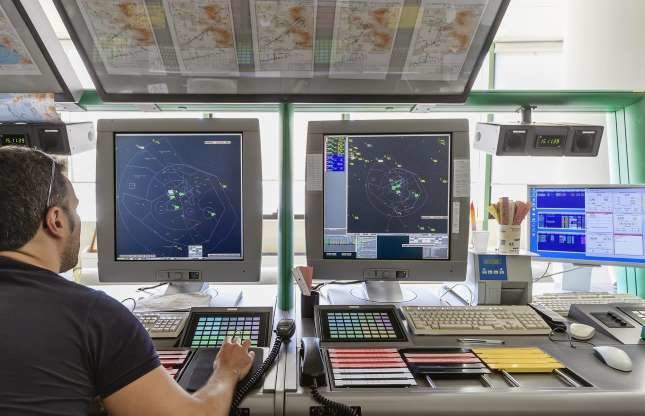
Air traffic controllers are responsible for 2.2 million passengers' safety
In the USA, 14,000 FAA air traffic control specialists deal with the safety of 2.2 million airline passengers every single day. Different departments manage planes as they travel at altitude, approach the airport, or take-off and land – the latter is always done from the airport's control tower. Air traffic controllers issue landing and take-off authorization and instructions, and they are responsible for warning pilots of nearby planes or potentially hazardous conditions.
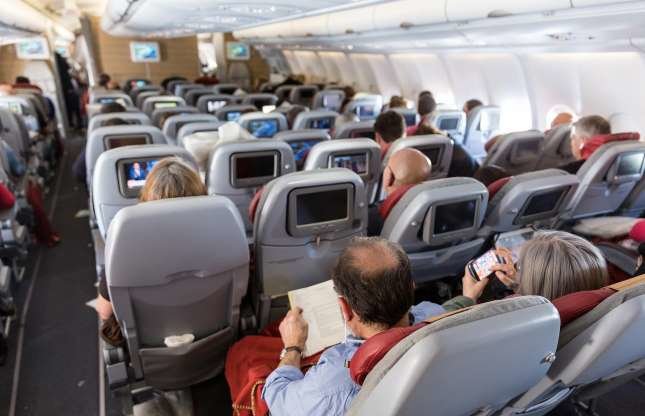
Flights are overbooked to keep fares low
According to travel expert Simon Calder, flights are overbooked in order to keep fares down. The thinking is that customers regularly don’t show up for flights so overbooking is an easy way for the airline to make extra profit. It’s also worse for the environment when planes fly at less than capacity. Theoretically, if the flight is blown (more customers than seats), the airline can offer incentives to passengers who don’t mind volunteering to give up their spot. But some recent high profile cases have seen passengers dragged off overbooked flights.
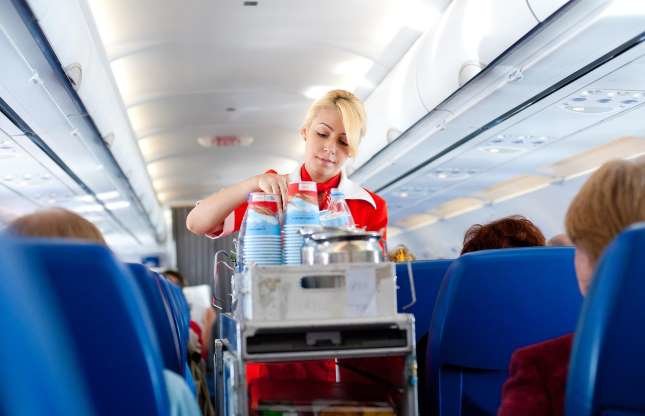
Flight attendants have a variety of roles
Before you board the plane, flight attendants will have carried out a safety check and ensured the plane is clean and tidy. They then welcome passengers on board and prepare and serve food and drinks. A lot of time is spent ensuring passengers are comfortable and at ease – and in rare cases, a flight attendant might have to carry out first aid or restrain a passenger.
The tracks left behind by planes are called contrails
Those white tracks in the sky are called contrails and there’s some science behind them. When a plane is in flight, its hot exhaust mixes with the surrounding atmosphere which, at high altitude, is much colder and thinner than the plane’s emissions. This causes the water vapor in the exhaust to freeze, leaving icy streaks across the sky.
Cabin air may be bad for your health
The quality of cabin air has been a point of hot dispute for some time. Though most airlines insist there are no risks associated with breathing cabin air, some studies, including safety reports from the CAA, suggest otherwise. The air you breathe on board contains “bleed air”, which is taken from a turbine engine, compressed and conditioned, and pumped into the cabin. Some argue that it can become contaminated with chemicals which contribute to a range of health issues. The debate continues.
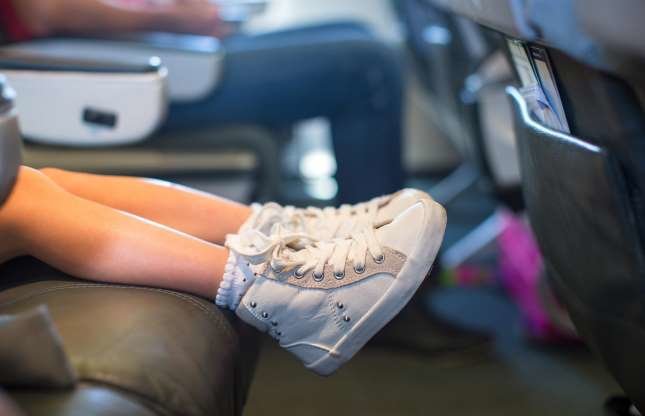
Air pressure makes your legs swell
If you’ve spent more than a couple of hours on a flight, you may well have noticed that your feet, ankles and legs have expanded considerably. It’s mainly just because you’ve been sitting still for too long, allowing for a build-up of fluid. The change in air pressure and some likely dehydration adds to the reaction. Make sure you walk around (when the seatbelt sign is off, of course) and drink plenty of water.
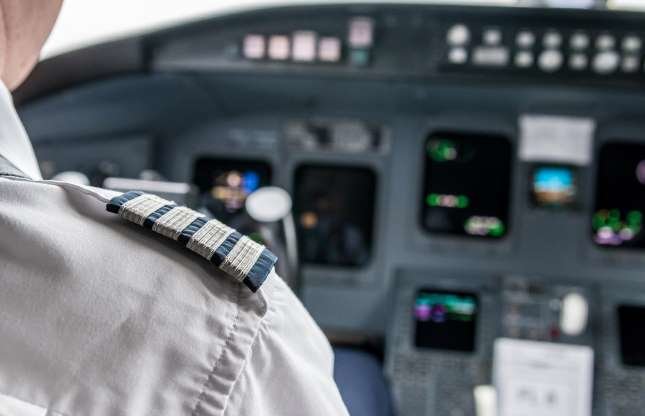
Pilots often fall asleep on the job
There's no need to panic about this one. It’s known as controlled or in-seat rest, and it means that one pilot will snooze (usually for no longer than about 45 minutes) while their co-pilot takes full responsibility of the controls. The resting period will be agreed in advance (during times of low activity), and the co-pilot will be properly briefed and the rest of the crew should be informed.
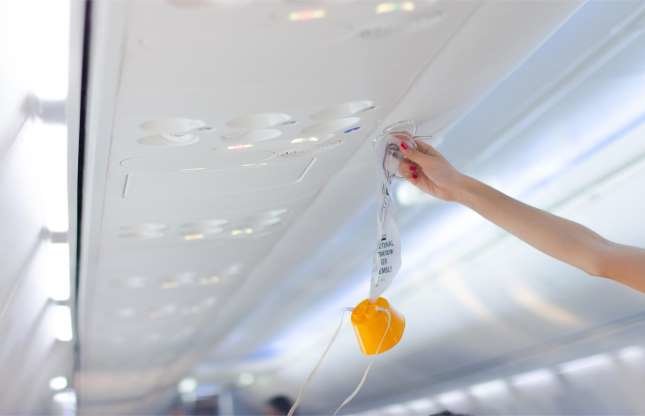
The oxygen masks only provide up to 15 minutes of air
If cabin pressure falls to a certain point, masks will drop immediately and there is an oxygen reserve that will last around 12–15 minutes. That may not sound like much but don’t worry. Should this occur, the pilot will ensure the plane is brought to a safe altitude as quickly as possible.

Budget airlines aren't less safe than full service carriers
The cost of an airline should make absolutely no difference to its safety levels. Although passengers choosing the budget option might take a hit when it comes to comfort, airlines simply cannot and will not cut corners when it comes to the safety of their passengers. Planes operated by budget carriers must adhere to the same regulations and standards as their more pricey competitors, according to the CAA.
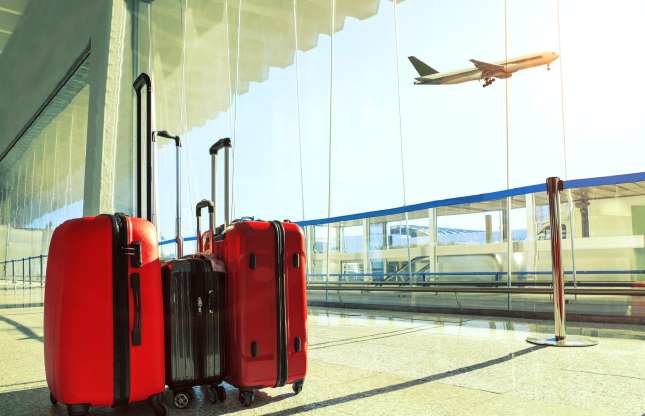
Your lost luggage gets auctioned off
It’s the ultimate travel disaster – you arrive at your destination airport to find your bag was lost in transit and is nowhere to be seen. Most lost luggage is reunited with its owner within a few days and there will usually be some monetary compensation if the bag has well and truly vanished. But what happens if that luggage is never claimed? There’s such a thing as a lost luggage auction which hawks the abandoned goods to eager punters ready for a bargain.
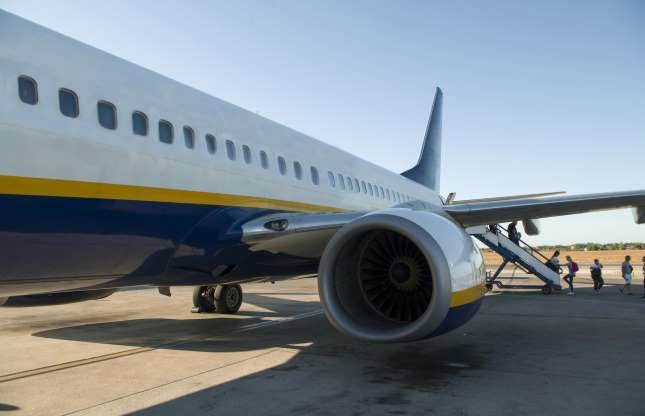
There's a reason you almost always enter/exit on the left
There are a couple of potential reasons why people usually enter and exit on the left side of the plane. Firstly the luggage hold and the fuel tank are (mostly) on the right side, so keeping passenger activity to the left reduces the risk of injury. But some believe this pattern is actually linked to nautical history. A ship’s port would always be on the left and so it's thought that aircraft designers followed this same format.
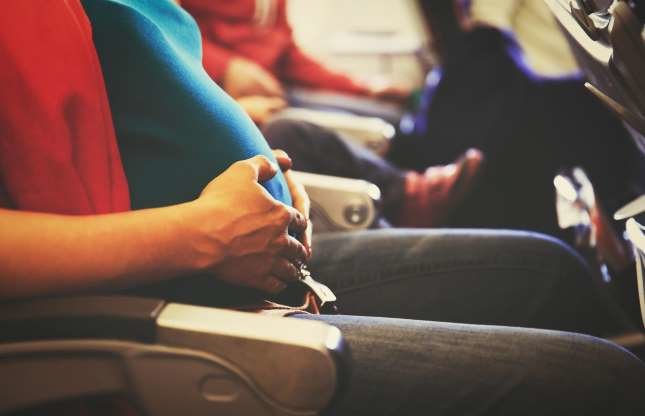
Babies born in US airspace become US citizens
This has only happened on a few occasions and it’s a real gray area. The newborn's citizenship depends on several factors. In some parts, it pertains to the airspace occupied when the baby was born – the States, for example, recognize any baby born on US soil, including airspace, as an American citizen. According to the UN, though, a baby born in transit should become a citizen of the country that the airline is registered to. In other cases, the child may adopt their parents’ nationality.
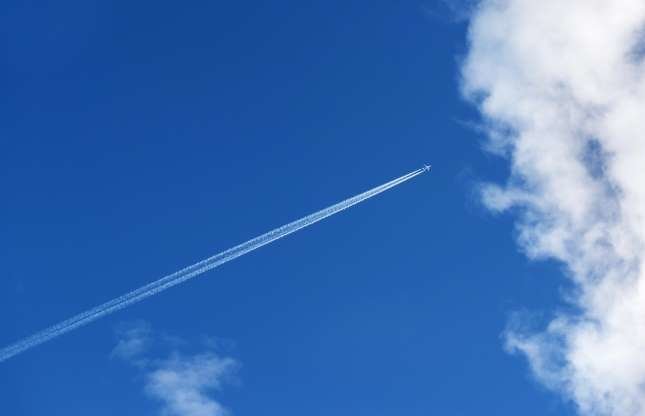
24-hour flights aren't far off
Currently, the world's longest scheduled non-stop commercial flight is the Singapore Airlines route between Singapore and Newark (flights SQ21 and SQ22). But Pete Evans of Surf Air says 24-hour flights won't be far off in the future. "It won’t be long before we could see 24-hour flights as aircraft engines become even more fuel efficient,” he explains. Qantas recently completed a test of the longest non-stop passenger flight – 19 hours and 16 minutes from New York to Sydney.
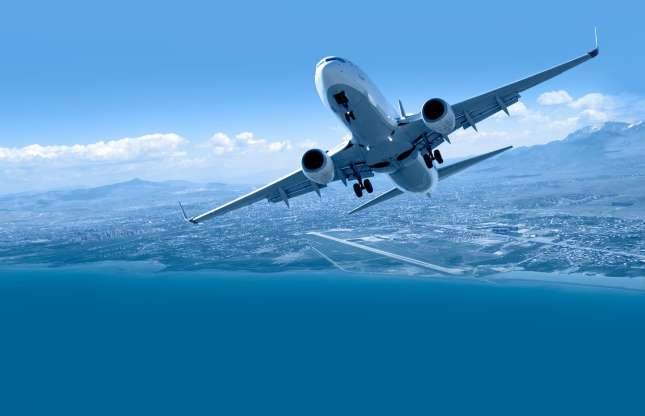
Air on top of the wings creates lift, not the air below
Founder of Stratajet and former commercial pilot Jonny Nicol says planes stay up by creating lift with their wings. "What causes lift is introducing a shape [the plane] into the airflow, this curves the streamlines and introduces pressure changes. The lower pressure on the upper surface [of the wings] and higher pressure on the lower surface creates lift.”
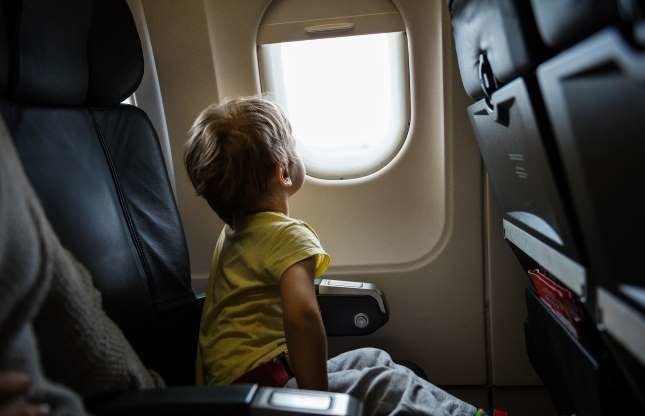
Passengers help the crew during take-off and landing
Take-off and landing are “the most critical phases of a flight”, according to flight attendant and Whistlestops.co.uk founder Leandi Schoonraad. “Passengers can often see more of what’s happening outside the aircraft than the crew can, and they can (and have) alerted us to potential external dangers such as ice on the wing or smoke from the engine. After an emergency landing, it’s also essential that people outside the plane can see and indicate to people inside and vice versa."
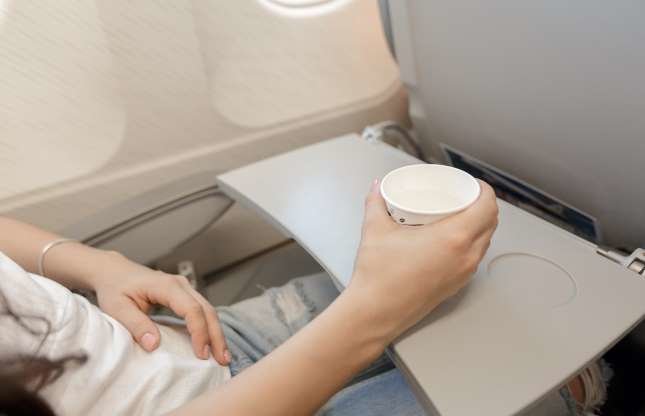
Seats have to be upright for safety
“From a safety perspective, [upright seats for take-off and landing] are for a 'just in case' emergency scenario,” says Leandi. “If the seat’s reclined, it's harder for you to get up and out of your seat, and that extra second per person can be a matter of life or death. Also bear in mind that a reclined seat, especially in economy class, impacts on the space the person behind you has. If you make it awkward for them to get out by reclining your seat, you’re potentially risking their life in an emergency landing situation."

Darkness in the cabin is also a safety feature
“The lights should always go out before take-off or landing if it’s dark outside. The cabin needs to reflect the exterior environment so your eyes don’t need to adjust in an emergency situation,” says Mandy Smith, former Virgin Atlantic air hostess and author of Cabin Fever, a behind-the-scenes account of being an air hostess.

The pilot communicates with cabin crew through the 'double ding'
“The double ding as we call it,” says Mandy, “means that the pilot has had the checks in from the cabin manager and the go ahead for take-off.” Pete Evans, COO of Surf Air and former head of operations at Virgin Atlantic, says there are many different sounds and various airlines use them differently. "They're like a set of codes for passing instructions between crew. The most noticeable ones happen during the climb after take-off, telling the crew that it's safe for them to leave their seats."
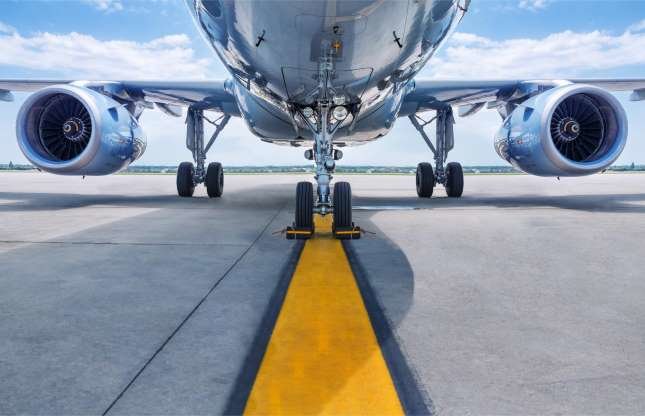
Engine power reduces almost immediately after take-off
“Airlines and airports like to be ‘friendly neighbors’,” says Pete of Surf Air. “Power is reduced as soon as it can be to reduce noise. An aircraft needs a lot of power from the engines to get off the ground but once airborne the amount of power needed can be reduced – the climb to cruising altitude will normally be much less steep than take-off.”
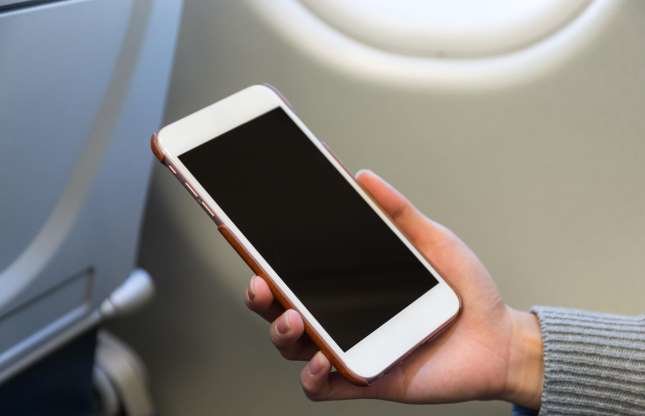
If your phone's left on, it probably won't interfere with the equipment
Dan Air, flight attendant and Confessions of a Trolley Dolly blogger, says the official line is that devices not on airplane mode can interfere with aircraft equipment. He admits, "But if I’m honest, nothing would really happen. I’ll let you in on a little secret: I often forget to switch my phone off, and except drain my battery, little else happens. However, if 400 people all have their phones on, problems could occur. Plus, if you can’t survive without it for a few hours then you really need to get out more!"
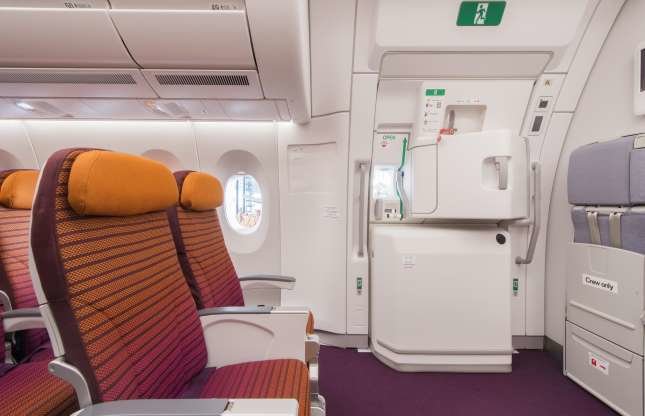
It would take super-human strength to open a door mid-flight
“Most aircraft doors are what we call ‘plug’ doors,” explains Mandy of Cabin Fever. “It means that the door is larger than the hole we walk through, making it impossible to open mid-flight because of pressures within the cabin.” Pete from Surf Air added: "It would take super-human strength to open a door on a fast-moving aircraft at altitude. The doors usually open out and forward so if anyone attempts to open them, the fast-moving air outside would push it back into its closed position."

Engines can stall mid-flight but it's rare
“Engine failures are very rare,” says Jonny Nicol of Stratajet. He reassures that if it does happen, it’s not a major cause for concern: “Part of the assessment of aircraft includes its performance with one engine and even if you lose all engines, an experienced pilot will still be able to get you down safely. I once landed an aircraft in Santorini after both engines cut out by gliding it down onto the tarmac through a thunderstorm.”
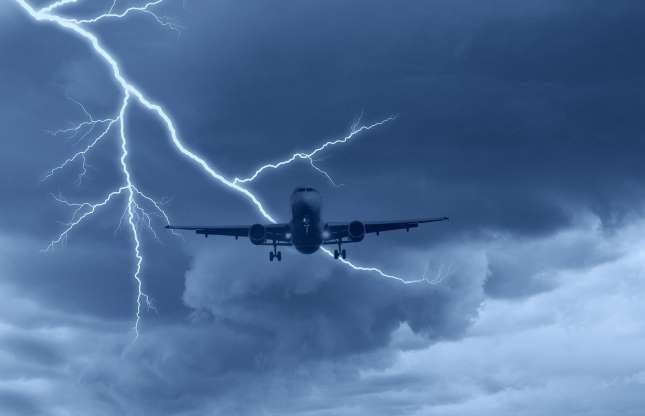
Lightning can strike planes but it often goes unnoticed
“Typically, a bolt will hit an extremity, such as a wing tip or the nose, and the current will travel through the plane’s metal shell before leaving from another point, the tail, for example,” explains Jonny. “Once in a while there’s superficial exterior damage or minor injury to the plane’s electrical systems, but a strike typically leaves little or no evidence. In fact, you might not even notice it."
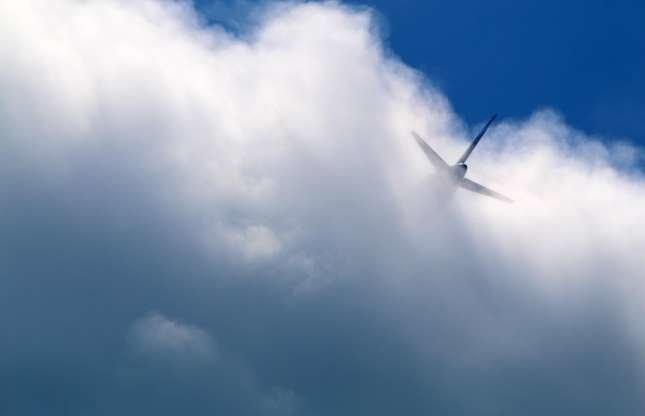
Turbulence has multiple causes
“Turbulence can come from jet streams (strong wind), wake turbulence (another plane passing by), cloud cover and stormy skies,” explains Leandi. Mandy, Cabin Fever author, describes it as an “unpredictable creature" with air pockets often being completely undetectable. “I’ve had many incidents where the aircraft drops suddenly,” she says. "I've been injured in turbulence several times during my career and even now I never feel comfortable as a passenger without my seatbelt on."
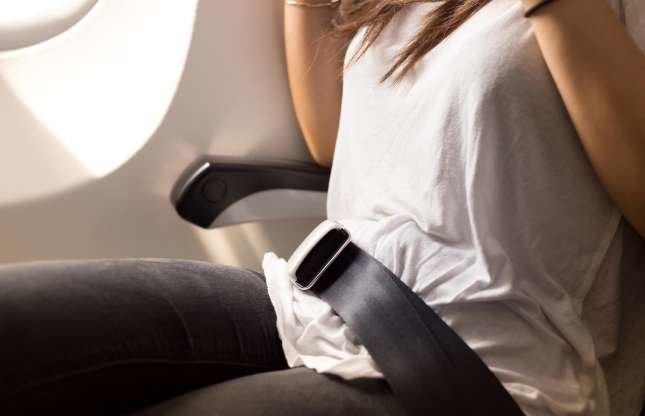
Planes are unlikely to crash due to turbulence
It's highly unlikely that planes will crash due to turbulence but "never say never", says Pete of Surf Air. "The reality is an aircraft is designed and tested to go way beyond what we normally expect from turbulence, even severe turbulence." He points out that turbulence often feels far worse than it is. "A modest movement of, say, 10 feet (3m) can feel like a huge jolt. It would have to be really exceptional to cause the aircraft structure to fail," he says.

The seatbelt sign is a communication tool between pilot and passenger
“The seatbelt sign is your captain’s way of communicating with you,” says Leandi of Whistlestops.co.uk. “Their primary concern is passenger safety so if the captain sees turbulence coming, the seatbelt sign will be switched on as a warning to you and the crew to prepare themselves. Of course, we do our best to avoid the bumpy air so if the sign is on but you don’t have any turbulence, then your captain did a great job of deviating around the weather. Or he or she forgot to switch it off."
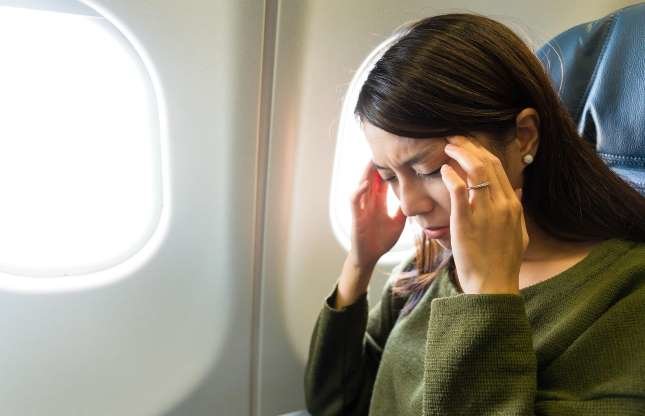
Rationality won't help your fear of flying
According to psychotherapist and coach Rob Stewart, nervous flyers shouldn’t try to rationalize their fears. “You'll end up playing cognitive tennis and going back and forth between anxious thoughts and rational thoughts, but all the while becoming more introspective and more anxious,” he says. Rob recommends a strategy called attentional focus. “Attentional focus acknowledges uncomfortable thoughts and feelings, but then redirects our attention to something more helpful: a conversation with someone, a book, magazine or film."
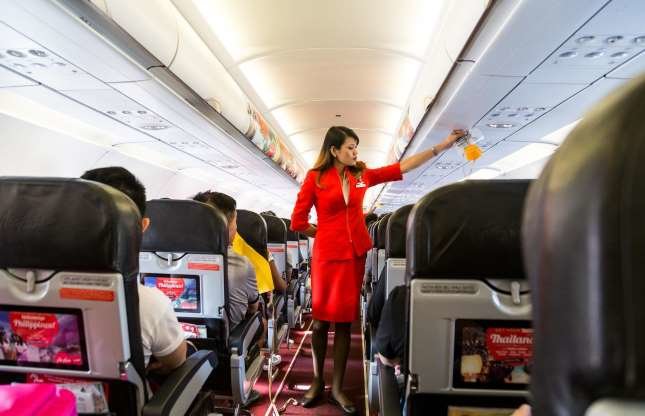
Flight crew can also get scared, sometimes
“We’d be lying if we said we didn’t [get scared]," says Dan Air. "However, in my 12 years of flying I could count on one hand the amount of times I’ve been scared, and I use that word loosely. We have a job to do on board and are professionals, so it’s not very often you’ll see us crack." Leandi agrees: "We’re scared of a lot of things but flying isn't one of them. The thing that scares me most on board is aggressive or violent passenger behavior."
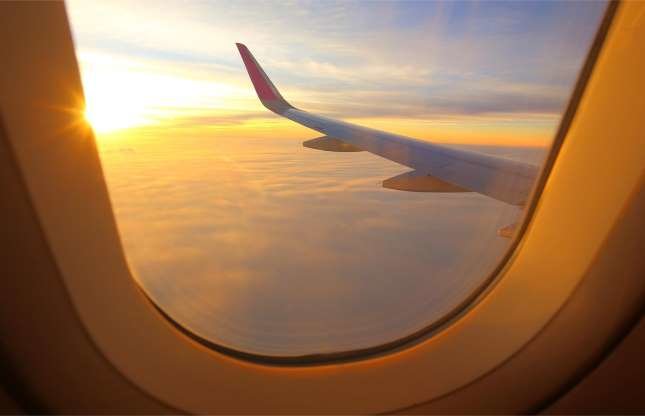
You can get pretty close to other planes in the sky
“[Other planes] can be as close as 500 feet (152m),” according to Pete at Surf Air. Jonny of Stratajet says there are a lot of regulations that ensure planes are never dangerously close. He adds: "Private jets generally fly at a higher altitude than commercial aircraft (usually around 41,000 feet/12.5km compared to 36,000 feet/11km). This allows for a more direct route as it’s out of the more congested area of the sky and the flight is less likely to be affected by adverse weather conditions.”
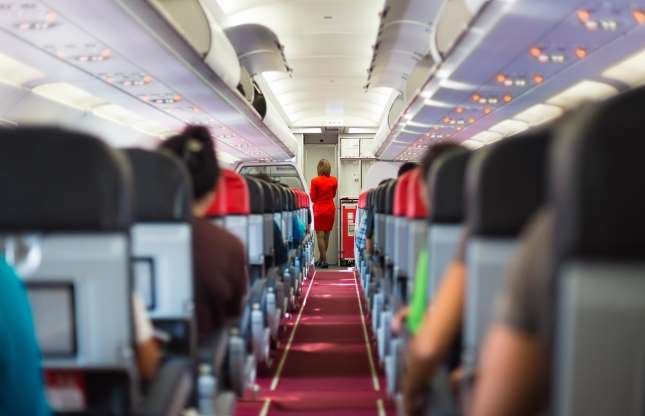
Crew sometimes sleep in the ceiling on long-haul legs
“We have our secret little area called the crew rest," reveals Dan Air. "Depending on the aircraft this can be found in the tail, in the belly or sometimes in the ceiling of aircraft. They’re pretty confined so not the best if you’re claustrophobic. But they do offer a welcome break from passengers. Now what goes on in the crew rest area is a whole other story, but let’s just say if those bunks could talk, it would be a bestseller!”
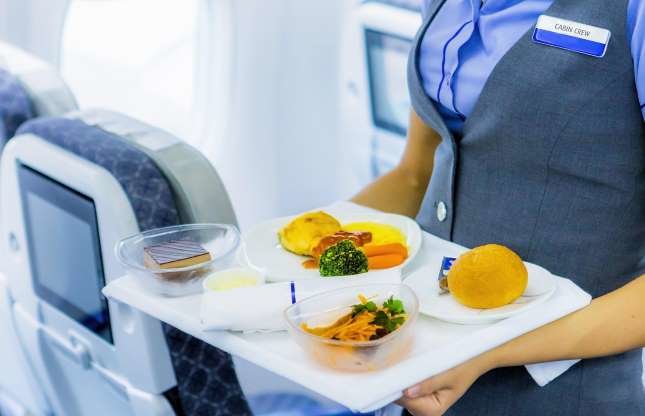
Meals are prepared on the ground a few days in advance
“With the exception of a few 5-star international airlines, we don’t actually cook on board,” says Leandi. “The meals are prepared a couple of days in advance and packaged. That’s why if you have a special dietary requirement, we ask that you tell us about it 48 hours in advance. Then when we get on board, we just pop the meals in the oven and heat them for 30 minutes before serving them to you on the meal trays.”
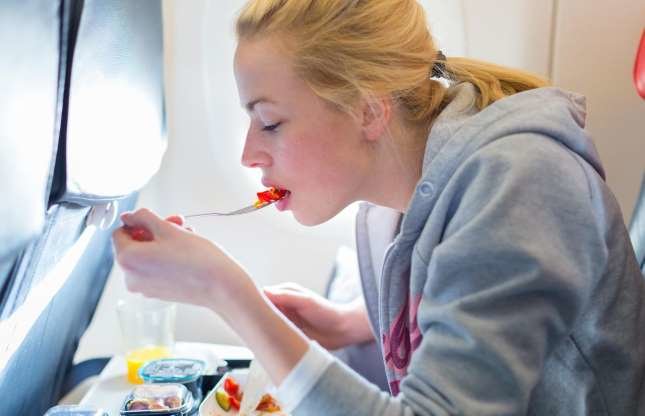
Aircraft pressure makes the food taste rubbish
“[Plane] food is pretty tasteless anyway, even the good stuff up in first [class],” admits Dan Air. “Scientifically speaking however, it’s all down to aircraft pressure. Combine this with the dry cabin air and your taste buds basically go numb.”
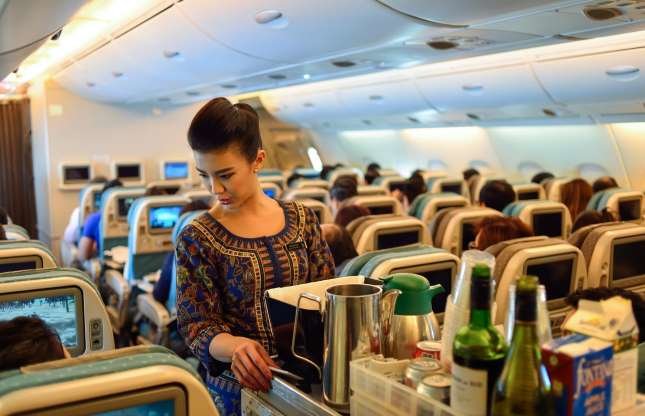
Flight attendants have the same meals, but have their own hacks
“We eat the same food most of the time,” says Leandi. “Crew all have their own tricks – some carry miniatures of Tabasco sauce and other condiments. I personally carry a tin of tuna or an avocado with me to make an otherwise plain salad more substantial and appetizing. Remember that bread and fizzy drinks can make you feel bloated, especially on board, so do as we do and avoid!” Discover our favorite hacks to create the best in-flight meal here.

Dehydration on long-haul flights means you'll get drunk quicker
“During a flight your body gets incredibly dehydrated,” says Dan Air. “On average during a 10-hour flight it will lose at least two liters of water. Add to that the dehydrating effect of alcohol and if you keep drinking during a flight, you can expect one mother of a hangover the next day!”
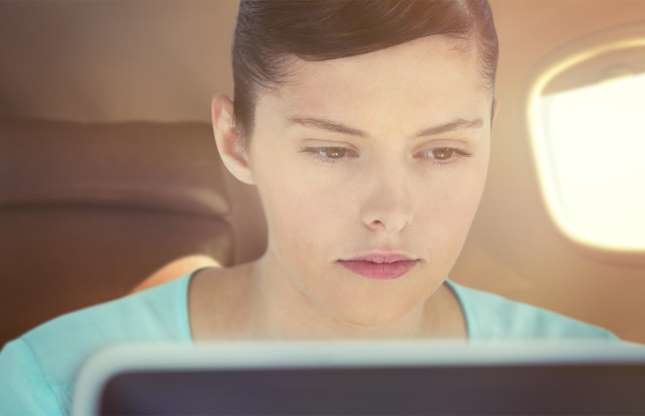
People cry more on planes
“If you find you're an anxious flyer, your threat response part of your brain, the amygdala, will be in a state of activation,” says psychotherapist Rob Stewart. “This controls not only your fight and flight response (no pun intended!) but the same region of the brain for other emotions. So, you become more prone to other emotional states when you’re feeling uncomfortable. Having said that, maybe The Notebook is just that much more real at 30,000 feet (9km)!” Read more about the effects that flying has on your body here.
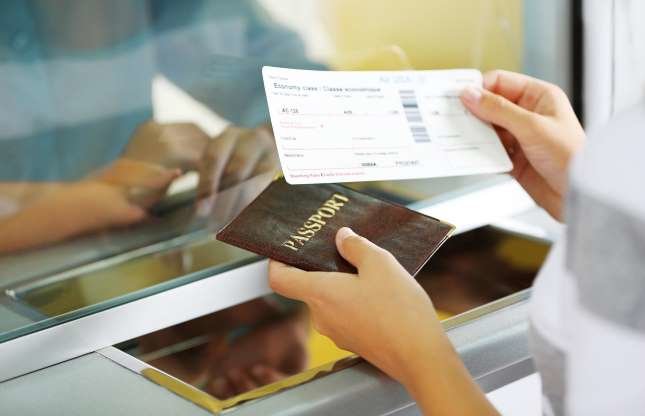
Good manners go a long way
“Be polite! You will get the moon on a stick from many crew members if you're nice to us," says Dan Air. "Ask us how our day is going or bring us sweets or goodies (bribery is never frowned upon), and we will bend over backwards to help you. Sadly though the days of free upgrades are becoming more rare as airline bosses clamp down on such behavior. Unless you’re paying the big bucks to be there in the first place then airlines don’t want to know." However, these small hacks will upgrade your experience, no matter what class you're in.
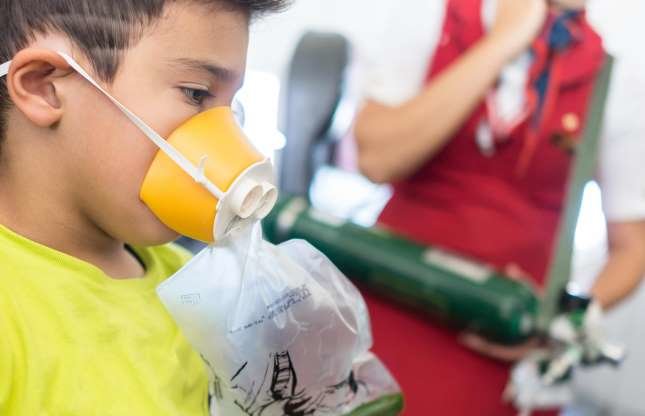
Cabin crew are first-aid trained
“We just get on with our job," says Dan Air. "Believe it or not we don’t actually need a doctor. Our aviation first aid training is so good that on occasions, doctors can be more of a hindrance as our equipment is often very different to what you'd find in hospitals. We on the other hand are fully trained in it. That’s not to say we don’t all breathe a huge sigh of relief if there is a medical emergency and a doctor, nurse or paramedic steps forward.”
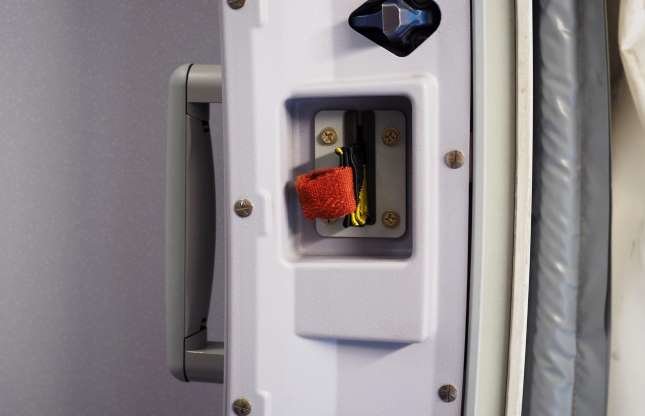
'Doors to manual' stops the emergency slide from automatically inflating
'Doors to manual' is a basic protocol after landing, Mandy explains, where the crew move doors into the manual position. "We then swap from the left-hand side to check our colleagues' doors on the right-hand side are also in manual then give a thumbs-up to the manager. If the doors are in automatic when opened by the ground staff, the slide would inflate, causing injury as they open the doors."
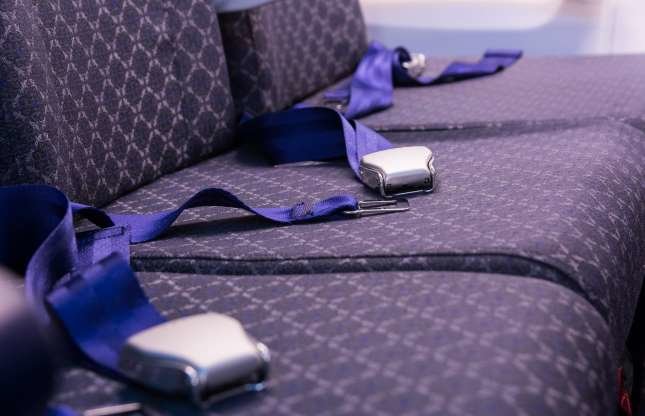
Cleaning time is minimal on many flights
Many short-haul and domestic flights only have around 30 minutes of ground time, according to Leandi. “That's crazy when you think that means passenger disembarkation, cleaning, re-catering, security checks and passenger boarding for the next departure. Larger aircraft, especially on long-haul flights, will have closer to 90 minutes, which is still impressive given what needs to be done in that time. There’s very little margin for error and delays can have a big impact,” she says.
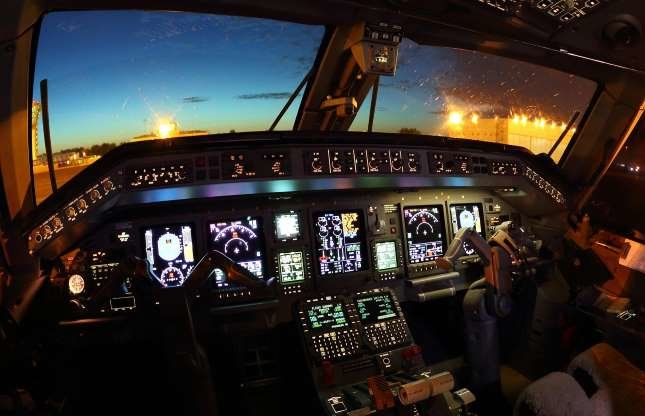
Planes can really fly and land themselves
Pete says, “An entire flight could be operated by auto-pilot, but pilots usually perform manual take-offs and landings. An aircraft can be landed automatically all the way to a complete stop on the runway. In the UK, the first autonomous airliner is being tested so in the future we could see pilot-less airliners.” But Jonny notes: “Autopilot won’t replace a pilot in commercial aviation because it can’t problem solve in an emergency. For that you need a well-trained pilot."
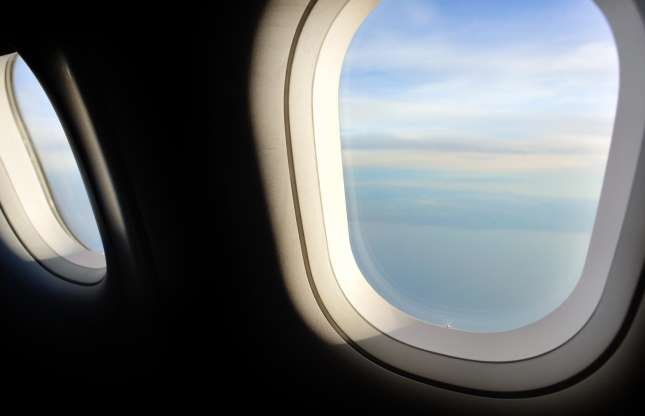
Plane windows are layered
Aircraft windows are made in layers. Surf Air's COO explains: "[There's] a glass window on the outside, an air gap, another glass window in the middle (with a little hole) and another layer usually made of plastic, which stops passengers scratching windows. The hole is an important safety feature which allows the cabin pressure to be consistent all the way to the outer window. If the outside window failed, the middle window would still be sufficient enough to maintain the cabin pressure, even with the tiny hole."
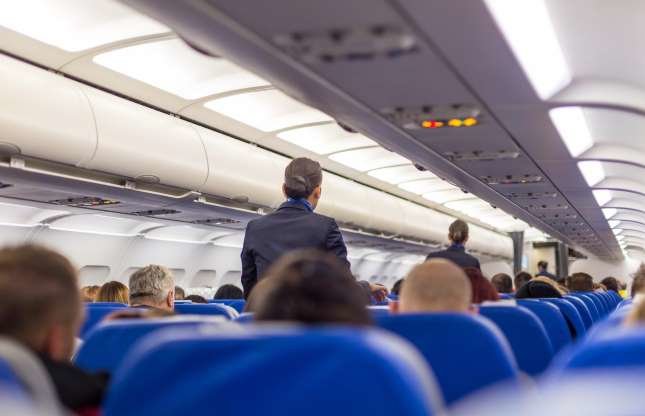
Seat swapping is OK, as long as you stay in your cabin
It's acceptable to take a spare seat in your respective cabin, says Mandy, but warns: "If you paid for economy then don't move yourself into an upper class or premium cabin. If there's a family traveling with children on their knee, I'd expect people to allow them to take a seat before they laid down and bagged themselves four seats each.” Oh, and it's polite to ask before you move.

The world's shortest flight is just one minute long
The shortest flight in the world is run by Loganair, which serves the Scottish Highlands, and goes from Westray to Papa Westray in the Orkney Islands, in just over a minute. You can’t book online either – it’s by email or over the telephone and costs around $22 (£17).

Air pressure causes your ears to pop
Quick changes in air pressure (which is when a plane takes off and lands) affects the pressure in your middle ear, and can be pretty painful. The Eustachian tube, which connects your middle ear to the pharynx, usually equalizes pressure on its own but finds it hard to respond quickly enough to these changes. Help activate it during take-off and landing by yawning, chewing gum or swallowing water regularly. Another tried and tested tactic is to pinch your nose and blow gently through your mouth.
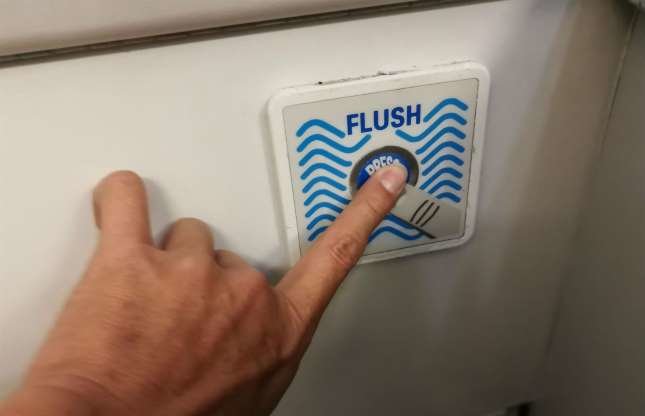
Planes don't dump waste in the skies
James Kemper’s patented modern vacuum toilet uses a tiny amount of blue fluid (carrying water would make the plane too heavy) and the contents are sucked down a sewer line and into a 200-gallon holding tank. It can’t be accidentally released during a flight because the latch can only be opened from the outside, and is then later vacuumed out by crews on the ground.

Planes are really expensive
If money is no object, a basic Boeing jetliner starts at a mere $82.4 million (£64.1m). However, for those with deep pockets, the 787 Dreamliner starts at $229.5 million (£178.5m). Costs vary on the number of aisles you want, seats and how much fuel the plane can carry. Better start saving now.
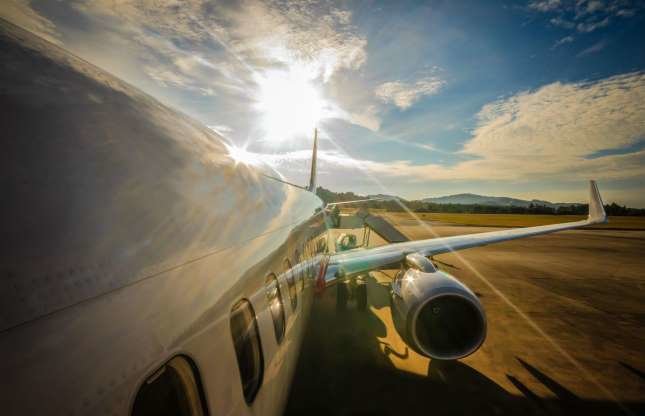
Security and safety mean you're not allowed to walk under the wing
One of the main reasons is because the engine of the plane might still be hot from the flight and poses a danger. The other is a security issue – ground staff are subject to major security checks before they are allowed to work anywhere near an aircraft while passengers don’t have the same clearance.
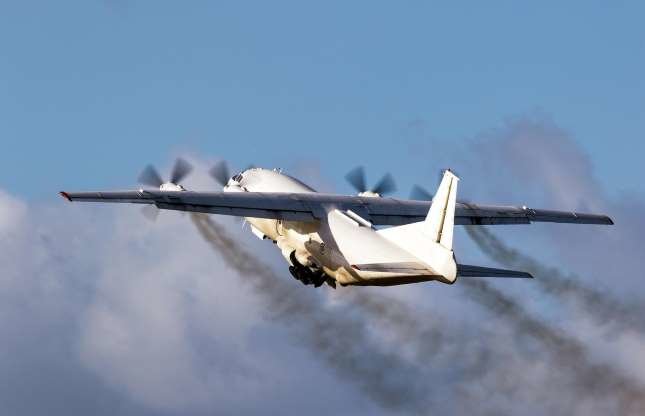
Carbon from planes stays in the atmosphere for 100 years
According to the Stern report produced for the UK government, aviation contributes to about 2% of carbon dioxide emissions, and is only likely to grow. Plus, the carbon emitted by a plane remains in the atmosphere for around 100 years. Where possible, it's worth considering train travel versus flights – for example, the Eurostar from London to Paris produces 10 times less CO2 emissions than a flight.

It can take 45 minutes to refuel
The length of time it takes to refuel a plane depends on the size of the aircraft and the number of ground staff available. But, using a Boeing 747-8 Jumbo as a rough guide (which seats 467 passengers), it can take around 44 minutes. Other factors include the number of hoses – bigger aircraft have two hoses while smaller ones have one.
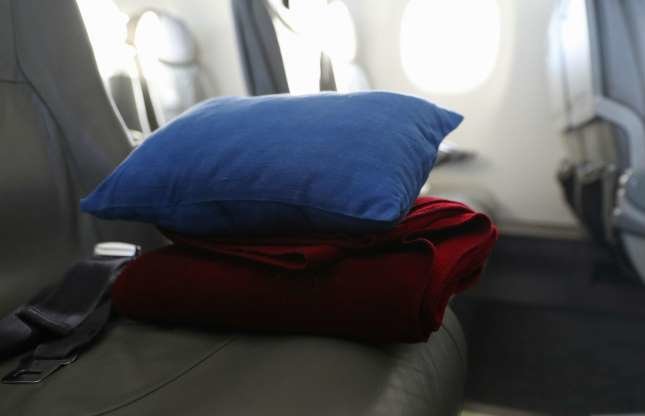
That blanket and pillow are safety features too
Apart from the obvious ones, such as seatbelts and oxygen masks, a plane is always fitted with nifty safety features. The cushions and blankets are flame-retardant and self-extinguishing, and there are lights close to the floor in case there's a fire and you need to see while you crawl to safety. As for your plane, twin-engine jets are designed to operate safely even if one engine fails.
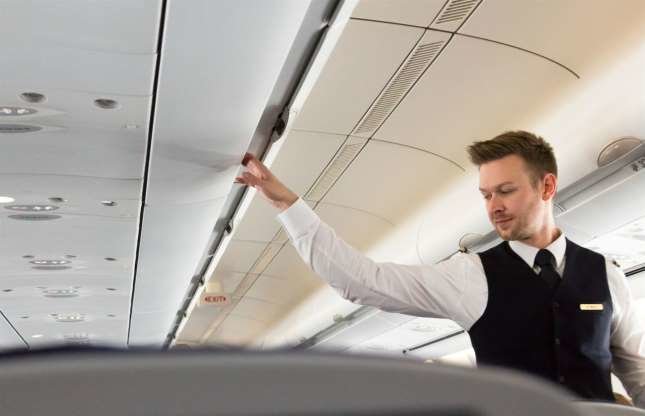
Planes come with body bags in case of a death on board
If there's a medical emergency, the plane is immediately diverted. However, if a passenger passes away on a flight while mid-air, the body is usually covered with a blanket and moved to an empty seat if available. If it’s a full flight, the deceased is usually placed in a body bag and laid out in the rear galley. In some instances, cabin crew have sat next to the body, but there is no perfect system as aircraft don’t have a designated space.
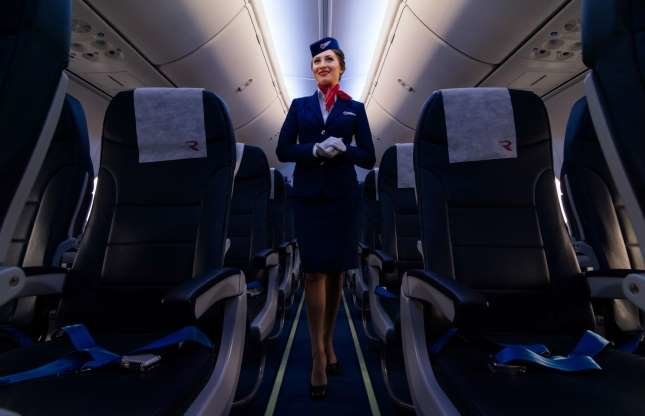
Flight attendants have to be strong swimmers
In the UK, the main requirements to become a flight attendant are GCSEs, the ability to swim, a passport and clearance from the Disclosure and Barring Service (DBS). It’s not just about serving food and drinks – flight attendants need to be aware of safety issues and deal with problems with a calm head. On average, it takes around eight weeks of training, which some airlines pay for if you get a job with them.
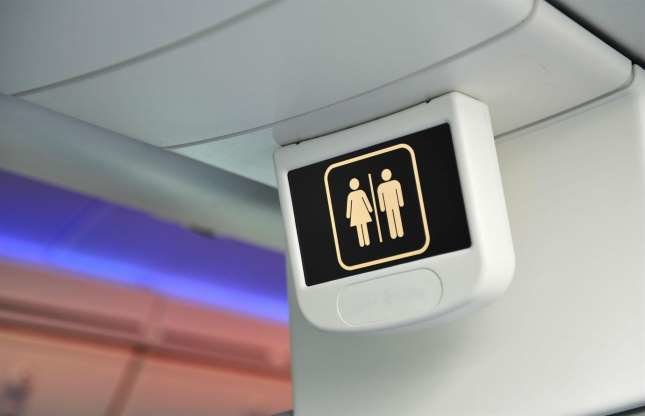
A plane can't take off if you're in the bathroom
Legally, a plane can’t take off if someone is in the bathroom because take-off and landing are two of the most at-risk moments on the plane. If the plane was forced to make an emergency landing or underwent severe turbulence, there is nothing in the bathroom that would protect a passenger, and worse, someone might get trapped in there.
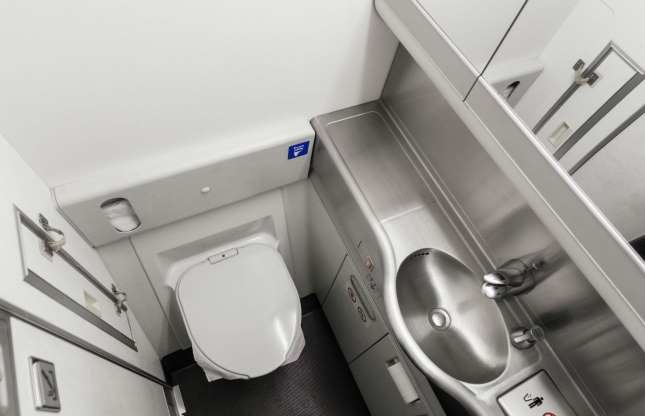
Bathrooms are supposed to be cleaned every 30 mins
There are no legal requirements but on average bathrooms are checked by a flight attendant every 30 minutes to make sure there’s enough toilet paper, and as a safety function that people aren’t doing anything strange in there. The blue liquid you see in the toilet also acts as a deodorizer. But it’s common that plane toilets are not cleaned to a high standard in the first place. Fingers crossed that the self-cleaning toilet Boeing has teased us with arrives sooner rather than later.

Airports collect extortionate landing fees
Annually, a UK airport such as Heathrow collects $19-26 billion (approx £15-20bn) in landing fees. On top of safety checks and maintenance, each flight can cost up to $26,000 (£20k) in fuel, take-off and landing fees. If there are complications, such as high winds or a last-minute emergency, it might cost an airline $5,000 (£4k) per flight.
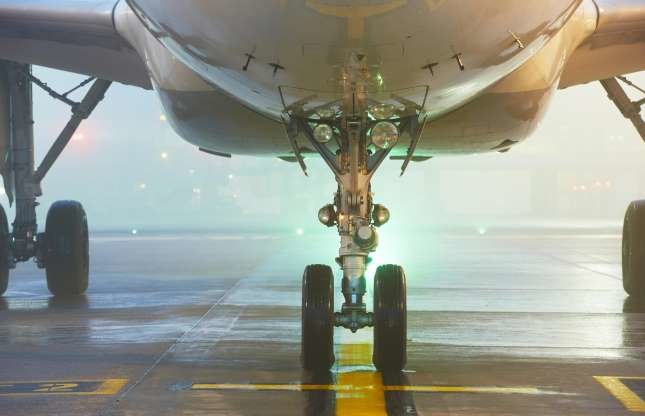
London's main airport averages one emergency landing a week
Emergency landings happen more often than you think. London Heathrow alone averages around one per week, according to the Civil Aviation Authority (CAA). Emergency landings can be the result of anything from poor weather conditions to passenger illness. If one should occur, trust that you’re in safe hands and you’ll be told what you need to know.
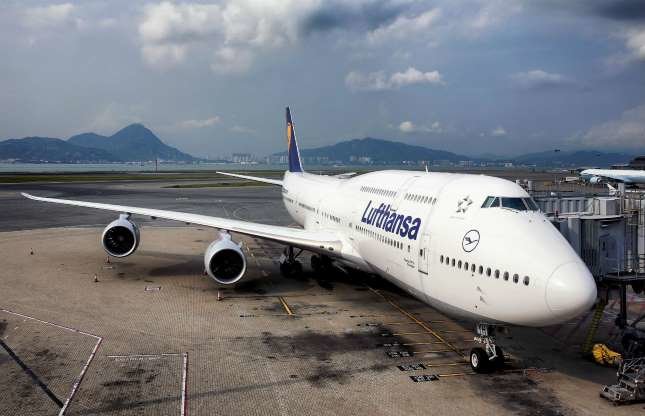
The fastest plane travels more than 650 miles per hour (1,046kmph)
The average cruising speed for a passenger jet is about 575 miles per hour (925kmph), but the fastest commercial plane in the world is the Boeing 747-8i, and the largest of the 747 family. It has a cruising speed of 659 miles per hour (1,060kmph) and is currently used by three operators: Lufthansa, Korean Air and Air China.

Flying from Perth to London once cost almost $24,000 (£20k)
People refer to the 1950s as the golden age of flying, but it also meant flights were only accessible to the privileged few. The cost of flying with Qantas on the Perth to London route back in 1955 would be $23,564 (£18,144) in today's money. Now, you can make the same journey for around $900 (£700). In 1958, BOAC (the British Overseas Airways Corporation, a precursor to BA) launched the first one-way fare from London to New York which was $225 (£173) at the time, but $4,990 (£3,842) in today's money.
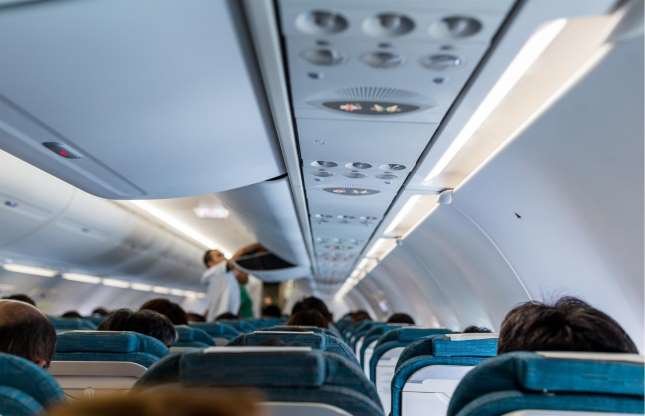
The arrows inside planes have special meanings
The inside of the plane is marked with red and black arrows, and these line up with the plane's wings. If a member of the air crew needs to check the wings, these are the best seats that offer a view of what’s happening outside. It’s really helpful in the winter as it allows crew to see if there is too much ice collecting on the wings.
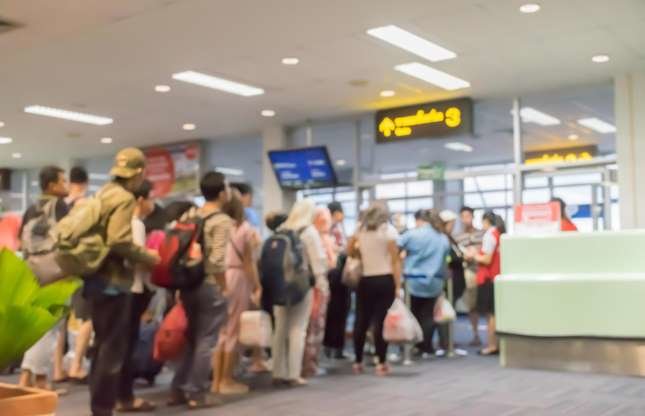
Eager to get on board? Cabin crew have a name for you
Cabin crew have all sorts of nicknames and words for things passengers don’t know about. One of those is a nickname for the people who crowd around the gate before anyone has been called to board. If you hear flight attendants referring to ‘gate lice’, they’re probably talking about those over-eager passengers who seem desperate to board.













